The PCB soldering process can look difficult to inexperienced technicians. However, it is one of the easiest and most enjoyable jobs for experienced technicians and engineers. It involves fixing a component by dissolving a solder and running it on the two contacts that You want to join.
Firstly you can view PCB Assembly Process here then you can know the soldering process in the PCB Assembly Procedure more clearly.
It is commonly used when mounting components on the PCB even though it can also be applied in plumbing and other electrical projects. In electronics, the performance of any circuit depends on the effectiveness of the soldering process.
Thus, it is necessary that You solder your components faultlessly if You want Your circuit to perform the job it is designed to do.
Table of Contents
The PCB soldering process can look difficult to inexperienced technicians. However, it is one of the most accessible and most enjoyable jobs for experienced technicians and engineers. It involves fixing a component by dissolving a solder and running it on the two contacts you want to join.
Firstly you can view PCB Assembly Process here then you can know the soldering process in the PCB Assembly Procedure more clearly.
It is commonly used when mounting components on the PCB, even though it can also be applied in plumbing and other electrical projects. In electronics, the performance of any circuit depends on the effectiveness of the soldering process.
Thus, You must solder your components faultlessly if You want Your circuit to perform the job it is designed to do.
What is Soldering on PCBs?
Soldering on PCBs results in populating the board with components. The tip of the iron is used to heat the solder and flow around Your parts.
The solder sticks at the tip to help transfer the heat and raise the temperature of the metallic part of the components to the solder’s melting point. This allows the piece to stick to the PCB.So firstly, you need to ensure the quality of your PCB is ready for the following processes.
1.1 The Use of Soldering
Soldering is widely used in electronics. It is used to join components in circuits and to make electrical contacts. Typically, soldering entails using alloys with a melting point that is lower than 450°C.
When used to join components, it allows them to perform a specific task as envisaged by the engineer. The members come with terminals that must be connected to circuits using solder through the soldering process.
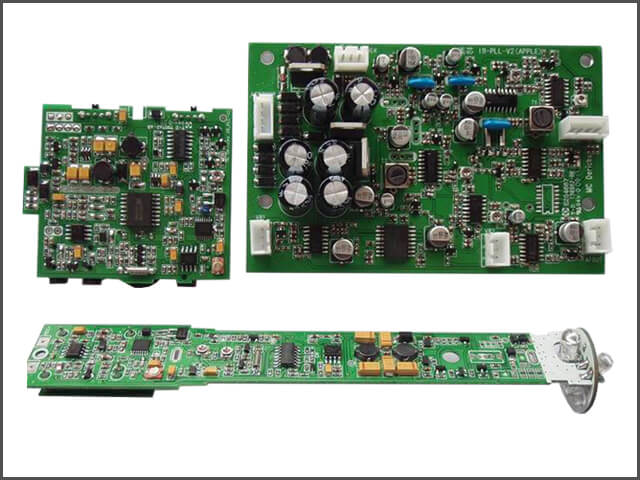
Figure 1: WELLPCB finished soldering product
Types of Soldering Process
2.1 PCB Soldering Process—Reflow Soldering
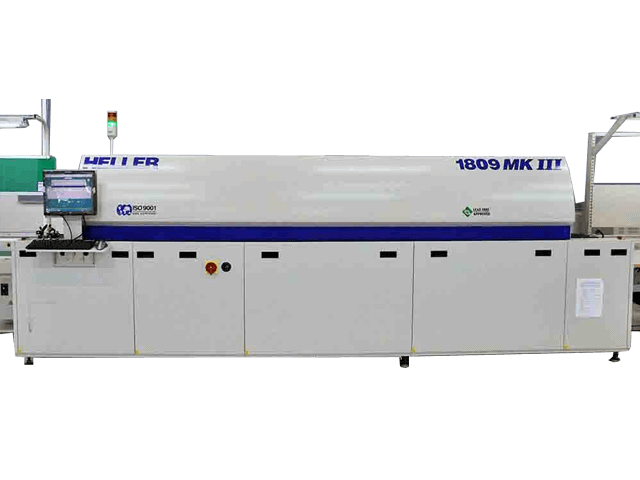
Figure 2 need to know about ordering custom PCB Circuit boards online. FOR the PCB board you need, you can contact us at WELLPCB Reflow Equipment
A mixture of flux and powdered solder is used to attach several electrical components to contact pads. The assembly is then subjected to heat, which then melts the solder and connects the joint permanently.
The assembly is then passed through a reflow oven. Reflow soldering is commonly used to attach components to circuit boards.
It may also be used to fill holes with the solder or insert component leads in through-hole boards. It reduces the cost of assembly to a great extent.
Typically, the main objective of reflow is to melt the solder and the adjoining surfaces without damaging the electrical components.
2.1.1 The Process
A conventional reflow soldering process has several stages. Each of the steps has a distinct thermal profile. Surface Mounted Technology is the most used technology because it allows the components to be placed directly on the board using solder paste, which serves as glue.
The board is then baked by raising it to over 2000C so that the solder is melted correctly. During this process, care must be taken because too much or too little heat may ruin the project.
The board is then sent through a series of chambers (zones) where it is treated.
2.1.2 Reflow zones
1. Preheating is a lengthy stage and allows for pre-heating of the circuit by raising the temperature slowly to be distributed uniformly. This stage could last for several minutes because the temperature must be submitted by 3-50 F/ second.
2. Thermal Soak is the second stage where the board is passed to the second chamber for the thermal soak. It ensures that heat is evenly distributed and activates the paste’s chemicals, which stops it from turning or forming microbeads.
3. Reflow SMT-oven – it is where the reflow soldering process happens by having the circuit board heated to a maximum temperature so that the solder is melted and bonded to the circuit board.
The convection method is preferred and is the most commonly used method. Timing is essential since the solder must melt, but it should not vaporize.
4. Cooling – the chamber allows the board to cool down to about 860 F. It is a rapid process that makes the solder forms a superior bond by degenerating into a crystalline structure.
5. Washing is the last stage of the process that manufacturers often ignore, but it is essential since it removes the grit and chemical residue on the board.
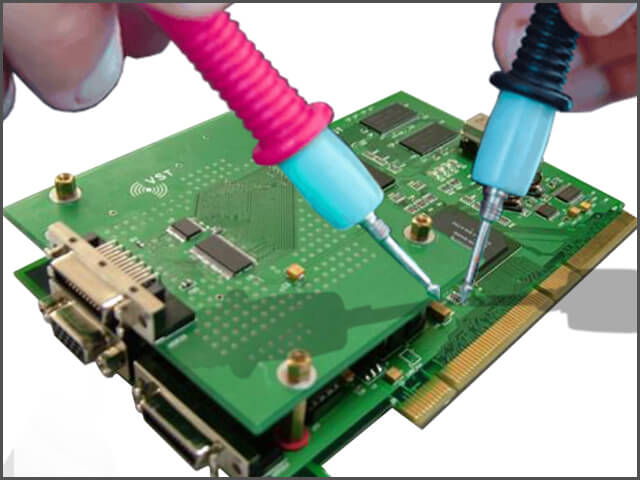
Figure 3 Soldering Process
2.1.3 Temperature and Curvature
It is referred to as the bending of the board, which results from the fact that the board consists of different layers, and so when subjected to heat and cooling, it must bend.
The board is made of multilayers and copper, which cools slower than the substrate. Notice that industrial reflow machines allow the PCBs to go through either wave or bath solder under controlled cooling to minimize the effect of warping.
It allows one to adjust the temperature to meet specific parameters and even heating that minimizes thermal shock when it is bathed. Controlled cooling is also essential since it will enable stress to even out. Notice that stresses can cause failure in the board.
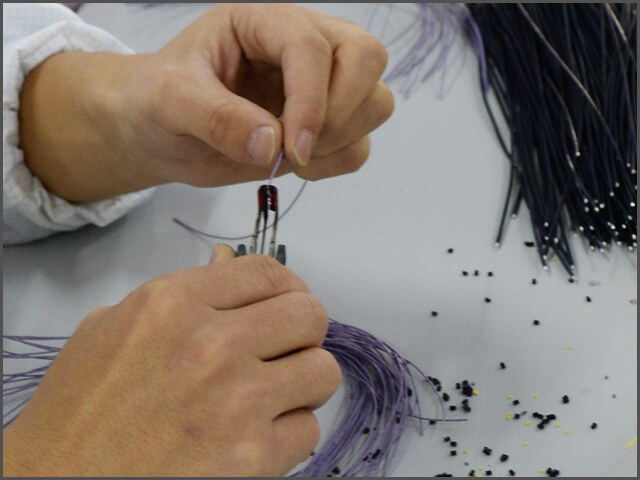
Figure 4 Soldering Wires
2.2 PCB Soldering Process—Wave Soldering
It is a process that happens through a giant oven with designated components. It allows the parts to be attached to the board fast. The process is efficient compared to soldering the details manually. Also, the machine can handle both surface mount and through-hole operations.
2.3 Manual Soldering
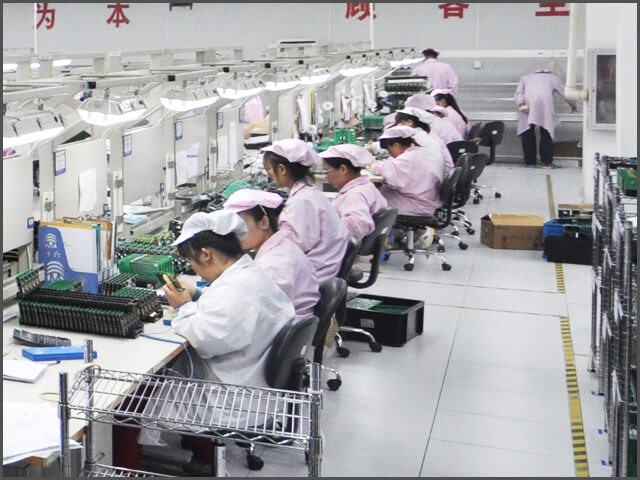
Figure 5 Manual Soldering Workshop
It is one of the oldest technologies used to fit components onto PCBs—the process required that the surface be heated to melt the solder.
It used to be a helpful technique, but advancements in technology have unveiled more efficient methods such as selective soldering, which has made this old technique fall by the wayside.
However, start-ups are still being used by the soldering process as long as they have relevant skills and a good soldering iron.
However, manual soldering is essential for particularly meticulous or tiny components that can not be used in mass production or in areas where high-quality standards are required; it entails using Your hands to solder the individual elements on the PCB.
Precautions and Tips Need To Pay Attention To
We have said that soldering is a process that entails fusing metals through melting. A filler metal with a low melting point is used to join the combined metals in the process.
Soldering can suitably be used in electronics to connect, an essential part of the PCB Assembly.
However, the process could be dangerous and necessitates precautionary measures before any soldering work is done. Here are the essential tips You should consider when soldering to ensure that You remain safe.
- Don’t touch the soldering iron tip- this appears like common sense. Still, the truth of the matter is that most inexperienced technicians injure themselves by touching the tip of the soldering iron heated to about 400 degrees.
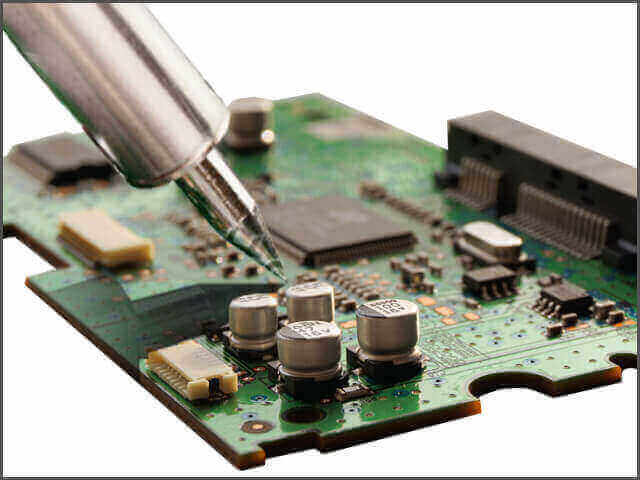
Figure 6 Soldering Process
- Don’t touch the mains flex with the tip of soldering iron- heatproof flex provides additional protection, so it should not be touched with a soldering tip.
- Don’t put the soldering iron on the table- ensures that the soldering iron is returned to its stand during and after use.
- Solder Your PCBs in areas that are adequately ventilated. The reason is that the fumes released when the solder melts can make You uncomfortable and so it is recommended that You move Your head away from the project to avoid the fumes.
Ensure that there is plenty of air circulating in the area You have designated as Your working place.
- Cleaning Your hands- It is important to remember that the solder is loaded with lead, which is poisonous, so it is necessary that You thoroughly wash Your hands after handling the solder.
Other Things You Need To Know About Soldering Process
The soldering process is critical in our day-to-day lives because it enables engineers to fabricate the equipment that makes our lives easy. However, the process is hazardous and produces fumes that can cause numerous health issues. However, take note of these facts:
- Using fume extraction equipment is necessary since it helps to protect one from harmful fumes.
- Using lead-free solder may sound like a good solution for most people. However, it is important to remember that they produce more than 250 percent of particles.
- Prolonged circuit board shopping, various things might get you confused. Whether you are going for a single-sided PCB, a double-sided PCB, or any other type of PCB, You can contact with air loaded with particles can cause permanent damage to Your lungs, so care must be taken, including wearing protective gear when working in soldering stations.
- There are plenty of wheelable suction devices on the market which can be used in soldering stations to suck air and minimize the risks You may be exposed to.
4.1 PCB Soldering Process—The Function of Flux
Flux is a purifying agent whose job is to reduce or eliminate the elements of rust on contacts soldered. Flux eliminates air in areas being soldered and makes it difficult for oxidation to take place.
Typically, engineers use Rosin–core solder in electronics that comes with solder to help the molten solder flow.
Also, flux helps the solder to melt and aids the molten solder to work correctly. Change can be dispensed using a needle, or if it is in pen form, it requires a little bit of pressure.
The flux helps remove the wetting bridges, especially when two or more leads are to be conjoined.
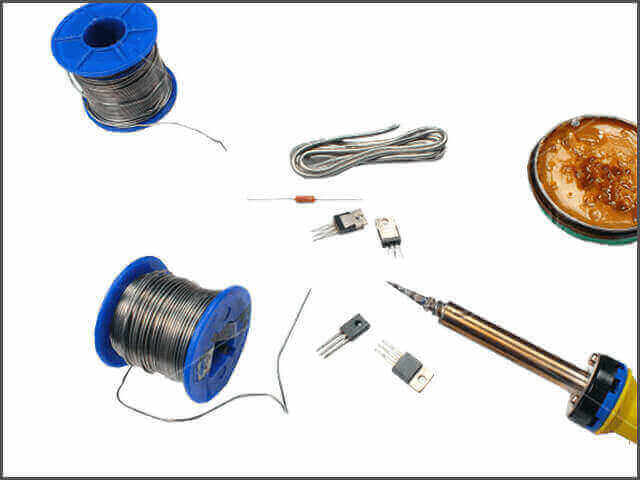
Figure 7 Solder Paste
4.2 Standard of Solder Point and Solder Pad
A well-designed solder pad should afford a strong joint and minimize solder bridging. These are two critical goals in soldering, which will always have conflicting dimensions needs.
Therefore, You must consider solder pads’ dimension tolerance, placement, and production tolerance when choosing your solder pads’ dimension.
The limitation of the soldering process is also critical because boards designed for reflow techniques have narrower pads than those designed for wave soldering, which must have more comprehensive places.
Notice that the standards have been calculated and can easily be accessed in programs at IPC.
PCB Soldering Process–Conclusion
Now that You have learned how to solder components on Your PCB, you will meet some problems during the process, so what You need to do is find a suitable and reliable manufacturer to help You.
PCB assembly equipment and vend products that stringent quality assurance standards. As a professional manufacturer, we provide both SMT and Through-hole. We use the latest Bill Of Materials (BOM) of a PCB to get fitted onto aboard.
All our products are ISO and UL certified and are ready to meet today’s PCB demand. You can place Your order for quality and standard PCBs from us.
All You need to do is to place Your order with details and specifications. We are committed to supplying You with quality PCBs that meet Your needs.
